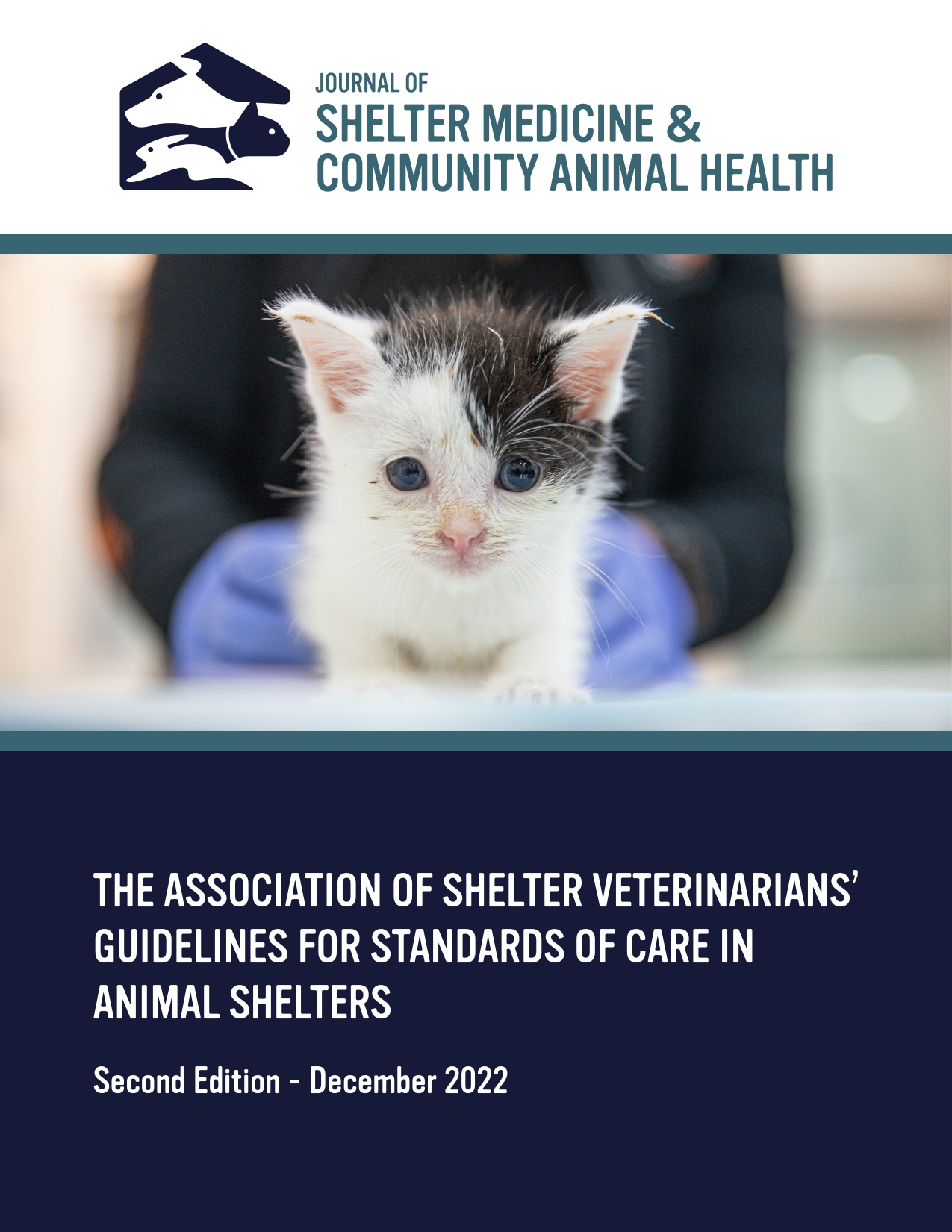Burkholderia-Associated Ocular Disease in Cats
DOI:
https://doi.org/10.56771/jsmcah.v4.117Keywords:
upper respiratory tract disease, cats, eyes, DNA sequencing, ocular disease, endophthalmitis, panophthalmitis, BurkholderiaAbstract
Introduction: Upper respiratory tract disease (URTD) is common in cats, particularly in multi-cat environments such as shelters. The disease can lead to severe ocular pathology and, in some cases, may require enucleation due to endophthalmitis or panophthalmitis.
Methods: Eyes from 16 young cats with URTD that were enucleated because of severe ocular disease (previously ruptured or markedly buphthalmic eyes) were evaluated using Next Generation DNA Sequencing (NGS) with universal bacterial primers to evaluate the entire bacterial population. Eyes were assessed for the presence of feline herpesvirus-1 (FHV-1) and feline calicivirus (FCV) by qPCR and RT-qPCR, respectively.
Results: All eyes had a high relative abundance of Burkholderia, ranging from 43.8 to 98.3%. Burkholderia was the most abundant bacterial genus in 15 of the 16 samples (94%). Of the 16 samples, 8 were positive for FHV-1 (50%), while 1 was positive for FCV (6%).
Conclusion: This study identified an organism that has not been previously associated with severe ocular disease in cats with URTD, and provides a new approach to understanding pathogens by evaluating entire bacterial populations rather than targeting specific microorganisms.
Downloads
References
1. Bannasch MJ, Foley JE. Epidemiologic evaluation of multiple respiratory pathogens in cats in animal shelters. J Feline Med Surg. 2005;7:109–119. doi: 10.1016/j.jfms.2004.07.004.
2. Helps CR, Lait P, Damhuis A, et al. Factors associated with upper respiratory tract disease caused by feline herpesvirus, feline calicivirus, Chlamydophila felis and Bordetella bronchiseptica in cats: experience from 218 European catteries. Vet Rec. 2005;156:669–673. doi: 10.1136/vr.156.21.669.
3. McManus CM, Levy JK, Andersen LA, et al. Prevalence of upper respiratory pathogens in four management models for unowned cats in the Southeast United States. Vet J. 2014;201:196–201. doi: 10.1016/j.tvjl.2014.05.015.
4. Fernandez M, Manzanilla EG, Lloret A, et al. Prevalence of feline herpesvirus-1, feline calicivirus, Chlamydophila felis and Mycoplasma felis DNA and associated risk factors in cats in Spain with upper respiratory tract disease, conjunctivitis and/or gingivostomatitis. J Feline Med Surg. 2017;19:461–469. doi: 10.1177/1098612X16634387.
5. Gerriets W, Joy N, Huebner-Guthardt J, Eule JC. Feline calicivirus: a neglected cause of feline ocular surface infections? Vet Ophthalmol. 2012;15(3):172–179. doi: 10.1111/j.1463-5224.2011.00957.x.
6. Adam S, Crispin S. Differential diagnosis of keratitis in cats. In Practice. 1995;17(8):355–363. doi: 10.1136/inpract.17.8.355.
7. Andrew SE. Ocular manifestations of feline herpesvirus. J Feline Med Surg. 2001;3(1):9–16. doi: 10.1053/jfms.2001.0110.
8. Stiles J. Ocular manifestations of feline viral diseases. Vet J. 2014;201(2):166–173. doi: 10.1016/j.tvjl.2013.11.018.
9. Nasisse MP. Manifestations, diagnosis, and treatment of ocular herpesvirus infection in the cat. Compend Contin Educ Small Anim Pract. 1982;4:962–970.
10. Maggs DJ, Lappin MR, Reif JS, et al. Evaluation of serologic and viral detection methods for diagnosing feline herpesvirus-1 infection in cats with acute respiratory tract or chronic ocular disease. J Am Vet Med Assoc. 1999;214:502–507. doi: 10.2460/javma.1999.214.04.502.
11. Gould D. Feline Herpesvirus-1: ocular manifestations, diagnosis and treatment options. J Feline Med Surg. 2011;13(5):333–346. doi: 10.1016/j.jfms.2011.03.010.
12. Labelle P. The eye. In: Zachary JF, ed. Pathologic Basis of Veterinary Disease. 6th ed. Elsevier; 2017, pp. 1265–1318.
13. Ion L, Ionascu I, Birtoiu A. Melting keratitis in dogs and cats. Agric Agric Sci Proc. 2015;6:342–349. doi: 10.1016/j.aaspro.2015.08.090.
14. Hartmann AD, Hawley J, Werckenthin C, Lappin MR, Hartmann K. Detection of bacterial and viral organisms from the conjunctiva of cats with conjunctivitis and upper respiratory tract disease. J Feline Med Surg. 2010;12(10):775–782. doi: 10.1016/j.jfms.2010.06.001.
15. Suter A, Voelter K, Hartnack S, Spiess BM, Pot SA. Septic keratitis in dogs, cats, and horses in switzerland: associated bacteria and antibiotic susceptibility. Vet Ophthalmol. 2018;21(1):66–75. doi: 10.1111/vop.12480.
16. Gerhardt N, Schulz BS, Werckenthin C, Hartmann K. Pharmacokinetics of enrofloxacin and its efficacy in comparison with doxycycline in the treatment of Chlamydophila felis infection in cats with conjunctivitis. Vet Rec. 2006;159(18):591–594. doi: 10.1136/vr.159.18.591.
17. Low HC, Powell CC, Veir JK, Hawley JR, Lappin MR. Prevalence of feline herpesvirus 1, Chlamydophila felis, and mycoplasma spp DNA in conjunctival cells collected from cats with and without conjunctivitis. Am J Vet Res. 2007;68(6):643–648. doi: 10.2460/ajvr.68.6.643.
18. Thomas PA, Geraldine P. Infectious keratitis. Curr Opin Infect Dis. 2007;20(2):129. doi: 10.1097/QCO.0b013e328017f878.
19. Leal SM Jr, Rodino KG, Fowler WC, Gilligan PH. Practical guidance for clinical microbiology laboratories: diagnosis of ocular infections. Clin Microbiol Rev. 2021;34(3):e0007019. doi: 10.1128/CMR.00070-19.
20. Greene CE. Infectious Diseases of the Dog and Cat. 4th ed. St. Louis, MO: Elsevier/Saunders; 2012, p. 1063.
21. Esson DW. Clinical Atlas of Canine and Feline Ophthalmic Disease. Hoboken, NJ: John Wiley & Sons; 2015, pp. 280–281.
22. Boom RCJA, Sol CJ, Salimans MMM, et al. Rapid and simple method for purification of nucleic acids. J Clin Microbiol. 1990;28(3):495–503. doi: 10.1128/jcm.28.3.495-503.1990.
23. Yabuuchi E, Kosako Y, Oyaizu H, et al. Proposal of Burkholderia gen. nov. and transfer of seven species of the genus pseudomonas homology Group II to the new genus, with the type species Burkholderia cepacia (Palleroni and Holmes 1981) comb. Nov. Microbiol Immunol. 1992;36(12):1251–1275. doi: 10.1111/j.1348-0421.1992.tb02129.x.
24. Parte AC, Sardà Carbasse J, Meier-Kolthoff JP, Reimer LC, Göker M. List of prokaryotic names with standing in nomenclature (LPSN) moves to the DSMZ. Int J Syst Evol Microbiol. 2020;70:5607–5612. doi: 10.1099/ijsem.0.004332.
25. Woods DE, Sokol PA. The genus Burkholderia. In: Dworkin M, Falkow S, Rosenberg E, Schleifer KH, Stackebrandt E, eds. The Prokaryotes. 3rd ed. New York, NY: Springer; 2006, pp. 848–860.
26. Eberl L, Vandamme P. Members of the genus Burkholderia: good and bad guys. F1000Research. 2016;5:1007. doi: 10.12688/f1000research.8221.1.
27. Callegan MC, Engelbert M, Parke DW, Jett BD, Gilmore MS. Bacterial endophthalmitis: epidemiology, therapeutics, and bacterium-host interactions. Clin Microbiol Rev. 2002;15(1):111–124. doi: 10.1128/CMR.15.1.111-124.2002.
28. Leis ML. An update on the ocular surface bacterial microbiota in small animals. Vet Clin Small Anim Pract. 2023;53(2):299–318. doi: 10.1016/j.cvsm.2022.10.004.
29. Parkes HM, Shilton CM, Jerrett IV, et al. Primary ocular melioidosis due to a single genotype of Burkholderia pseudomallei in two cats from Arnhem Land in the Northern Territory of Australia. J Feline Med Surg. 2009;11(10):856–863. doi: 10.1016/j.jfms.2009.02.009.
30. Dance DA. Melioidosis: the tip of the iceberg? Clin Microbiol Rev. 1991;4(1):52–60. doi: 10.1128/CMR.4.1.52.
31. Chen KJ, Sun MH, Hou CH, Sun CC, Chen TL. Burkholderia pseudomallei endophthalmitis. J Clin Microbiol. 2007;45(12):4073–4074. doi: 10.1128/JCM.01467-07.
32. Siripanthong S, Teerapantuwat S, Prugsanusak W, et al. Corneal ulcer caused by Pseudomonas pseudomallei: report of three cases. Rev Infect Dis. 1991;13:335–337. doi: 10.1093/clinids/13.2.335.
33. Wong JK, Chambers LC, Elsmo EJ, et al. Cellulitis caused by the Burkholderia cepacia complex associated with contaminated chlorhexidine 2% scrub in five domestic cats. J Vet Diagn Invest. 2018;30(5):763–769. doi: 10.1177/1040638718782333.
34. Mahenthiralingam E, Urban T, Goldberg J. The multifarious, multireplicon Burkholderia cepacia complex. Nat Rev Microbiol. 2005;3:144–156. doi: 10.1038/nrmicro1085.
35. Ho MC, Kang EYC, Yeh LK, et al. Clinico-microbiological profile of Burkholderia cepacia keratitis: a case series. Ann Clin Microbiol Antimicrob. 2021;20:6. doi: 10.1186/s12941-020-00407-6.
36. Coenye T, LiPuma JJ. Molecular epidemiology of Burkholderia species. Front Biosci. 2003;8 e55–67. doi: 10.2741/937.
37. St. John JA. Trojan horse L-selectin monocytes: a portal of Burkholderia pseudomallei entry into the brain. Virulence. 2017;8(6):611–612. doi: 10.1080/21505594.2016.1250997.
38. Currie BJ. Melioidosis: evolving concepts in epidemiology, pathogenesis, and treatment. Semin Respir Crit Care Med. 2015;36(1):111–125. doi: 10.1055/s-0034-1398389.
39. Liu PJ, Chen YS, Lin HH, et al. Induction of mouse melioidosis with meningitis by CD11b+ phagocytic cells harboring intracellular B. pseudomallei as a Trojan horse. PLoS Negl Trop Dis. 2013;7(8):e2363. doi: 10.1371/journal.pntd.0002363.
40. Mahenthiralingam E, Baldwin A, Dowson CG. Burkholderia cepacia complex bacteria: opportunistic pathogens with important natural biology. J Appl Microbiol. 2008;104(6):1539–1551. doi: 10.1201/9781003324010-3.
41. CDC. Clinical overview of melioidosis. Melioidosis. Updated May 6, 2024. https://www.cdc.gov/melioidosis/hcp/clinical-overview/index.html. Accessed July 19, 2024.
Published
Issue
Section
License
Copyright (c) 2025 Becky L. Morrow, Diana Ruggiero

This work is licensed under a Creative Commons Attribution 4.0 International License.










